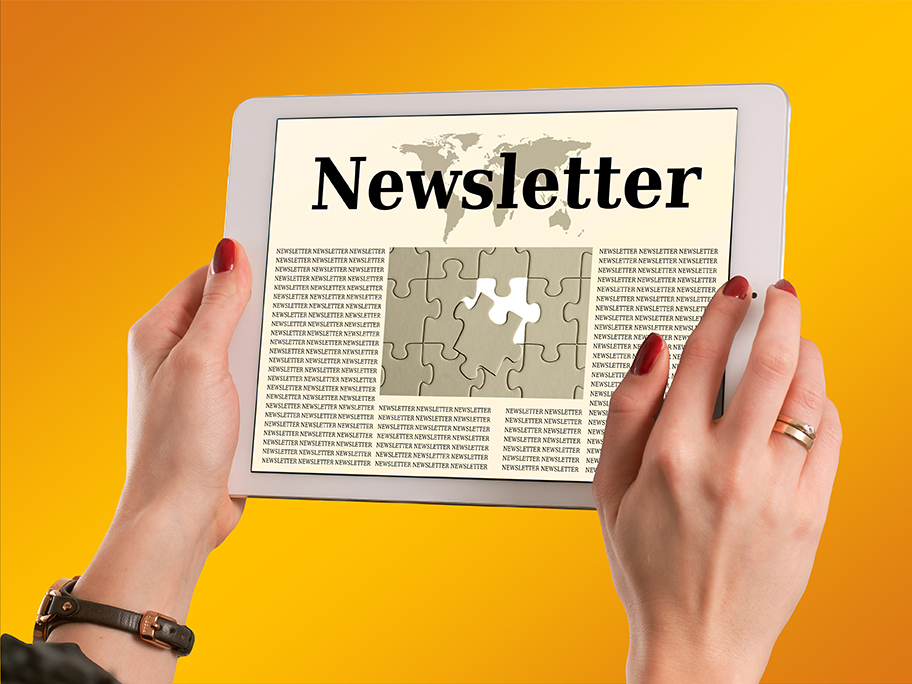
The secrets of successful newsletters
The views expressed in this column are those of the author and do not necessarily reflect the views of the Reynolds Journalism Institute or the University of Missouri.
We’re in the golden age of the email newsletter, and, as hundreds of writers and reporters have discovered over the past few months, launching one is easy. But growing a newsletter, building an audience, and possibly turning the whole enterprise into a successful business, is unquestionably harder.
In researching this column on what constitutes newsletter best practices for newsrooms and journalists, I found they’re actually much harder to pin down than you might think. Even basic tips, like having a regular cadence and send time, don’t apply universally.
Still, if there’s a first rule of newsletters, it’s Have Good Content. Be sure what you’re sending out is unique, and potentially crucial, for the audience you’re targeting. The size of the audience doesn’t matter — even newsletters with just a few hundred followers can be very successful if the audience is highly engaged and willing to deepen their relationship with your brand, sometimes with their own money.
Once you’re sure of your content, the rules start to vary, and they depend on the goal of the newsletter. For guidance on how to parse those goals and how to craft the best possible newsletter strategy to achieve them, I turned to Dan Oshinsky. Oshinsky led newsletter strategy for Buzzfeed and The New Yorker, and he currently runs Inbox Collective. He’s also the author of Not a Newsletter, a regularly updated Google Doc about email newsletters.
In Oshinsky’s view, the main thing you need to have to build a successful newsletter — whether you’re a newsroom or an individual — is patience.
“The road to scaling up a newsletter is pretty long. The number one thing that I tell most folks who are starting their newsletter is, ‘Be patient,’ because it’s probably not going to catch on immediately. At bare minimum it’s probably a two-year process.”
Once you accept that success takes time and hard work, you’re ready to define that success. For a newsletter, that’s determined by the audience behavior you’re trying to drive. That could be recruiting loyal readers, converting readers into paying subscribers (either of the newsletter or some other offering), or generating simple clicks back to a site.
The newsletter as a lens
For newsletters based around a brand, whether an individual or a publication, the goal is usually to build a loyal, engaged audience for the newsletter itself. The content is written with a consistent voice, often by a single author, sometimes leading with a larger essay or takeaway. Links are often peppered throughout, but they’re meant to give context and background for the author’s analysis or “takes,” not to drive clicks.
This type of newsletter (which I call the Lens format since it’s all about how the writer or brand sees the news and not the news itself) is probably the most common in today’s media. Generally, the more experienced the writer, the better the Lens, which builds more trust and loyalty with the readership. This type of newsletter is also strongly linked to the writer — for a newsroom, it’s difficult to keep a Lens newsletter going if the author departs.
There are other types of newsletters newsrooms use, and many of these are designed around a different audience behavior: driving traffic to a website. Usually this newsletter takes the form of a roundup of stories from the past day or week, a format that’s generally fallen out of favor as the Lens has gained prominence. However, some brands have successfully incorporated elements of the Lens — mainly voice and a forward-looking perspective — into the roundup style; The Wall Street Journal’s The 10-Point and CNN.com’s 5 Things are good examples.
“Just sharing a list of stories typically isn’t enough anymore,” says Oshinsky. “Readers’ expectations for email are so much higher than what they were a decade ago; the readers expect a certain quality and amount of thought put into the product. So the bar has been raised.”
There is perhaps one purely traffic-driving newsletter that can thrive with today’s audiences, and that’s the “big news” newsletter. This format essentially functions as a mass push notification for a unique “signature” story (usually a feature or investigative piece). ProPublica’s The Big Story is a good example — there’s no voice-y note at the beginning or commentary on the news of the day, just a large graphic that links to the story it wants to promote.
Getting open
The path to success for any newsletter begins with the open rate. A healthy open rate means your audience is actively engaging with your content — you’re writing the right stuff for the right people. The industry average stands at about 22%, according to MailChimp.
So what levers can you pull to boost your open rate? Usually, newsletter owners will fixate on the subject line, but this is misguided, Oshinsky says.
“The only thing that actually decides whether or not a reader opens the newsletter is not the subject line — it’s who the email is from. That’s going to be the primary decider whether or not you open or click. Now the subject line is going to add a little bit … If they see something great they might say, this actually seems really interesting; I want to make time for this. But in the ice cream sundae, it’s the sprinkles on top.”
One thing too many newsletter owners overlook, according to Oshinsky, is the preheader: the non-bolded text that follows the subject. You can usually see the first few words of the preheader on desktop, but on mobile it’s much more powerful since it effectively functions as the subheadline for the notification that accompanies your email. If you scan your newsletters, you’ll see many treat it as an afterthought or worse, boilerplate (“Email not displaying correctly?” et al.) — a big missed opportunity.
Another factor newsletter operators like to obsess about is send time. Conventional wisdom says newsletters work best first thing in the morning since, for most, the day is still a blank slate, and, at least in a pre-COVID era, many in the workforce had time to kill while commuting. But send time doesn’t matter nearly as much as ingraining the habit, says Oshinsky.
“At The New Yorker, we published most of our stories late morning early afternoon, so our newsletter went out at 1 p.m. and had an open rate north of 40%. We had to work towards and build the habit …. Over time, readers get used to certain emails coming at certain times.”
Perhaps the most underused newsletter tool for publishers is an effective welcome email and re-engagement strategy. Most email service platforms will let you set up a message for welcoming readers to your newsletter. You can even set up emails that get sent in other cases — like when a reader stops opening your newsletter for a while and you want them to re-engage.
“Everyone should build out a welcome series so when somebody subscribes, you’re guiding them through the next steps in their journey, introducing them to your team, explaining what you do and why you do it, and then giving them opportunities to come on board. For most newsrooms, email is the most effective way, the most direct way to convert a casual reader to a paying supporter.”
Ultimately, if there’s anything to keep in mind in executing the day-to-day work of a newsletter, it’s that the audience relationship is much more personal than in other formats. You don’t earn a place in a reader’s inbox, where push notifications from newsletters are mixed with messages from family, friends, and colleagues, without trust. That trust is earned by treating that person like a human. If you do that, who knows? Some of them might even start paying you.
